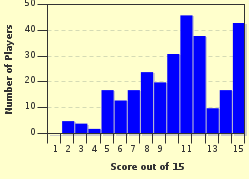Quiz Answer Key and Fun Facts
1. After which war was Yugoslavia originally formed?
2. The country was renamed Yugoslavia in 1929, under the power of what ruler?
3. Which of the following is true about King Alexander I's rule of Yugoslavia?
4. In 1939, what autonomous region was created in Yugoslavia that would remain a part of Yugoslavia, but would build an independent political identity?
5. On what date did Axis forces attack Yugoslavia?
6. On April 17, 1941, representatives from Yugoslavia's regions signed an armistice with Germany ending the 11 days of resistance against the German army. In which city was the armistice signed?
7. The Yugoslavian resistance forces against the ruling Axis Powers were in two main groups: the royalist Chetniks and the Communist Yugoslav Partisans. The Chetniks were led by Draza Mihajlovic. Who led the Partisans?
8. The AVNOJ was the political umbrella organization for liberation councils of Yugoslavia. It was established on November 26, 1942, when its first meeting was held. The meeting was led by Joseph Tito.
9. The second meeting of AVNOJ was held in 1943 in Jajce, Bosnia. During this meeting, Yugoslavia was created as a federal nation with six republics, each having equal rights. What day did the meeting end on, celebrated as Yugoslavia's independence day?
10. In June 1944, a referendum was held to determine the prime minister of the independent Communist state of Yugoslavia. Who was elected?
11. On January 31, 1946, the new constitution of the Federal People's Republic of Yugoslavia was written, modeled on that of the Soviet Union. What city was made the federal capital?
12. Slobodan Milosevic, a Serbian Communist leader, wanted to restore pre-1974 Serbian sovereignty. Which of these autonomies did Serbia gain control over under power of Milosevic?
13. What event led to each Yugoslav republic having multiparty elections in 1990?
14. The Federal Republic of Yugoslavia was formed in 1992, made up of Serbia and Montenegro. On May 21, 2006, many voters in Montenegro showed up for a referendum to vote on independence from Serbia. What percentage of voters voted in favor of independence?
15. One of the newest nations in the world, what autonomous region declared its independence from Serbia on February 17, 2008?
Source: Author
gk9760
This quiz was reviewed by FunTrivia editor
bloomsby before going online.
Any errors found in FunTrivia content are routinely corrected through our feedback system.


